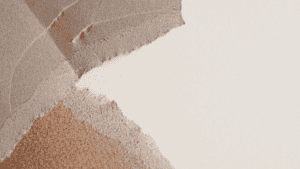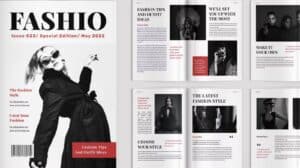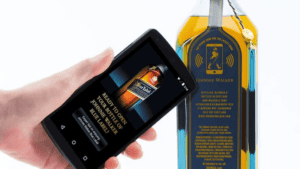Last Updated on June 26, 2023 by Packoi Team
Companies in the food industry are integrating 3D printing into their product development departments to enhance efficiency and decrease production costs. 3D-printed food packaging and labeling are safe even if they come into contact with food products. Regarding sustainability, 3D printing technology significantly produces less waste than conventional CNC machining, making it an eco-friendly option.
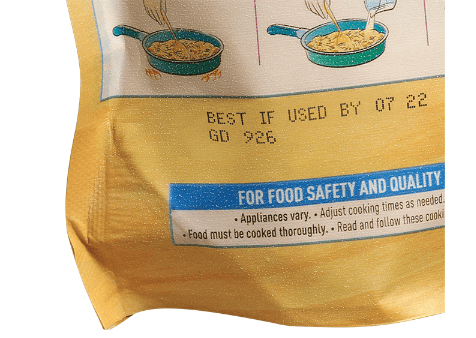
Materials required in the 3D printing of food and beverages must conform to food safety laws and standards. 3D printing is a revolutionary food and beverage industry process for designing food packaging prototypes. The essential materials in 3D printing of food and packaging products include food-safe inks, biodegradable paper, cured PET plastic, and linerless and thermal labels. These five materials will accomplish our processes in food and beverage manufacturing.
This article will guide you through printing materials used in 3D printing packaging and labeling in the food industry.
Material 1: Food-Safe Inkjet Inks
Also known as food-grade inks, fast-drying, food-safe inkjet inks are formulated with consumer safety in mind. They are safe and odorless, specifically prepared for creating design variations on food and beverage packaging or labeling using 3D printing technology. The food-safe inks adhere to the Food and Drug Administration (FDA) regulations, so they are safe and suitable for printing packaging and labeling for food products like chocolate and beverages. Food-safe inkjet ink is a kind of environmental protection ink, and if you are interested in environmentally friendly Ink for printing packaging, you can click to check.
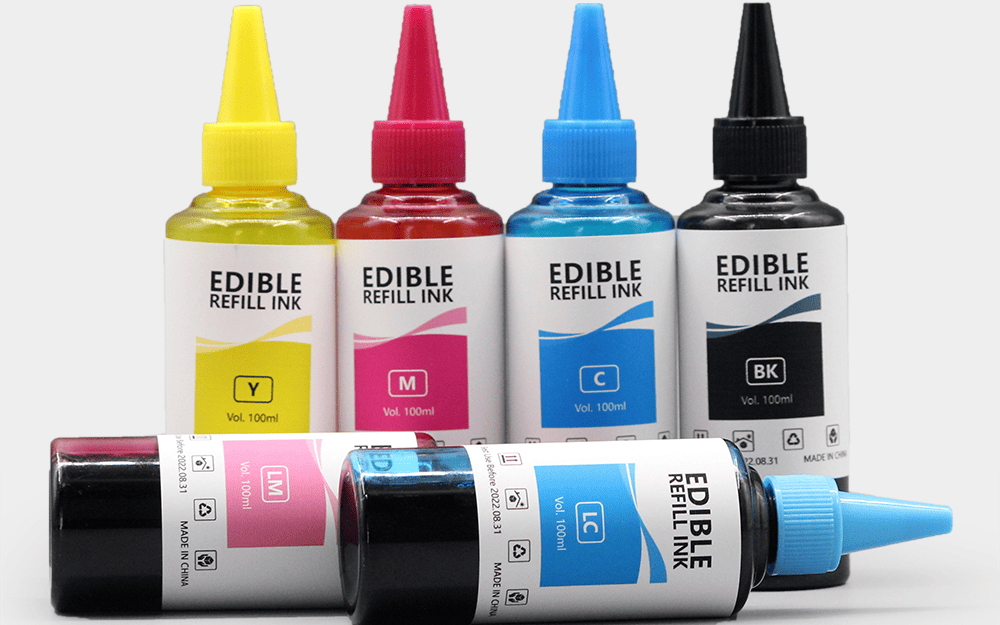
Advantages of food-safe inks
- Low migrationThe food-safe inks are composed of quality photoinitiators and monomers for delivering durable prints. Also, they are designed for rapid curing, minimizing migration risk when applied to the packaging. Since they have quality photoinitiators, the food-grade inks for 3D inkjet printer cures instantly when exposed to UV light or LED.
- High-quality printingThe food-safe inkjet inks have vibrant colors and high absorption. So, because of the low migration and rapid curing, there are no inks that surely produce high-quality and durable prints on the printed component.
Here are the common applications in the food and beverage industry
- Water-based food-safe ink has been widely used for printing shrink sleeves and flexible films, producing high-resolution graphics.
- Food processing industry manufacturers use food-grade inks to print flexible plastics, tin cans, glass beverages, and beer containers. Also, the inks can print on corrugated cases and cartons.
Material 2: Biodegradable and Compostable Paper
Since every company, especially in the food and beverage industries, is becoming environmentally friendly, biodegradable and compostable packaging has found its way into their business lines. 3D printing (also known as additive manufacturing) can print on biodegradable packaging, giving it a more appealing design for brand promotion.
Cornstarch-based Polylactic Acid (PLA) is a natural polymer safe for food contact. It is highly biodegradable and compostable. Additionally, Polylactic Acid is compatible with 3D printing technology, which is a major plus in producing effective packaging solutions that meet market demand.
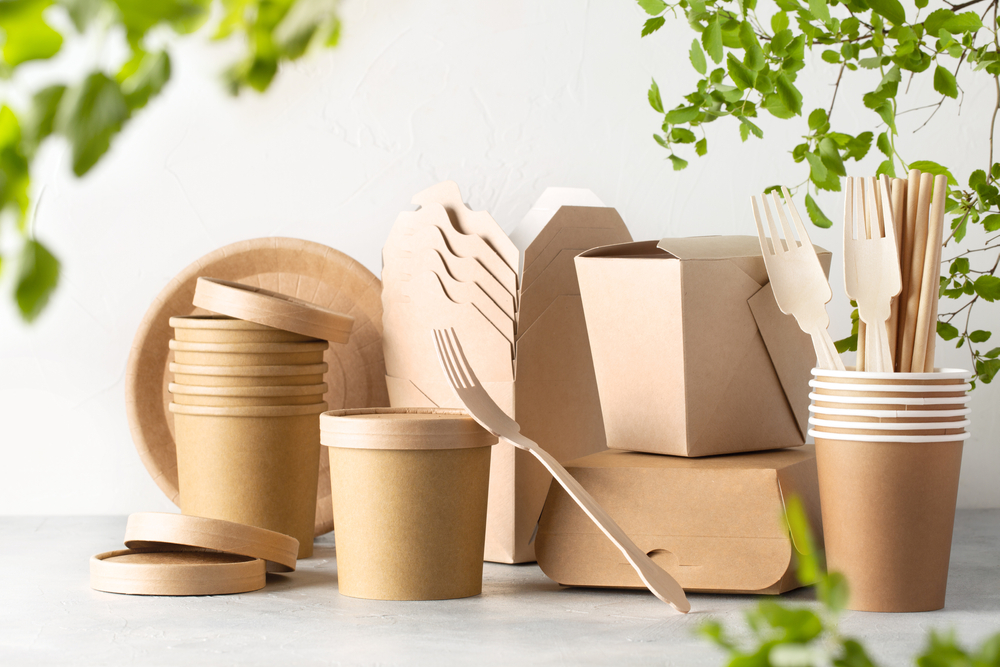
Environmental benefits
- Sustainable sourcing paper can be sourced from a sustainable forest in the form of wood fiber. Also, we can get it more sustainably; by recycling used paper material and reusing it for packaging purposes. The most interesting thing is that it can be recycled and reused several times without losing its quality.
- Reduced carbon footprint Biodegradable and compostable materials undergo complete decomposition when disposed of in compost. They break down, producing water, some nutrients in the soil, and carbon dioxide, which is a key factor in the biological cycle, so they contribute little to greenhouse gases as compared to petroleum-based plastics. Hence, reducing carbon footprint while meeting the needs of the food processing companies and customers.
Companies in the food and beverage industry use biodegradable and compostable paper to produce printable packaging solutions of various shapes:
- Popcorn bags,
- Milk cartons,
- Beverage cups,
- Fast food containers,
- Ice cream cups, and more.
Material 3: PET Films
Polyethylene Terephthalate (PET) is a common material in food packaging. PET films are lightweight, strong, and 100% recyclable. They come in different finishes when dyed with different colors but can be transparent to allow customers clearly see the contents inside the container. PET films comply with FDA regulations and are safe for food packaging.
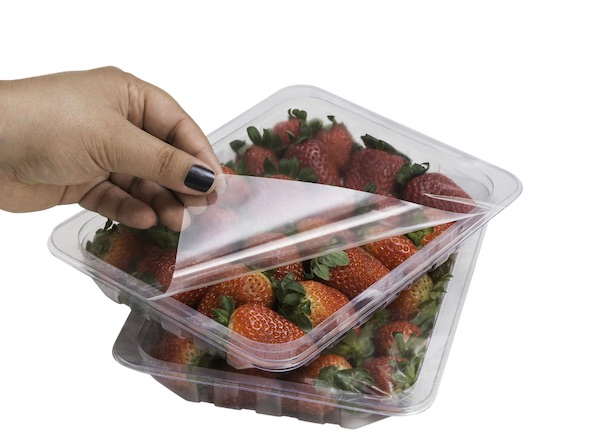
Advantages of PET films
- Durability – PET films are sturdy, durable, and not easily breakable or punctured. Because of their durability, they can be recycled and reused for other novel purposes.
- Resistance to moisture, grease, and chemicals – PET films do not absorb moisture, and any drop of water will spill off its surface. Also, they resist greasing and do not interact with most chemicals (chemically inert).
Because of its food-safe qualities, PET films have various applications in the food and beverage industry.
- PET films are used to make many plastic soda, water, and beer bottles.
- Packaging trays
- Blister packs
Note stiffer PET film combined with other fibers can be used in 3D packaging printing.
Material 4: Direct Thermal Labels
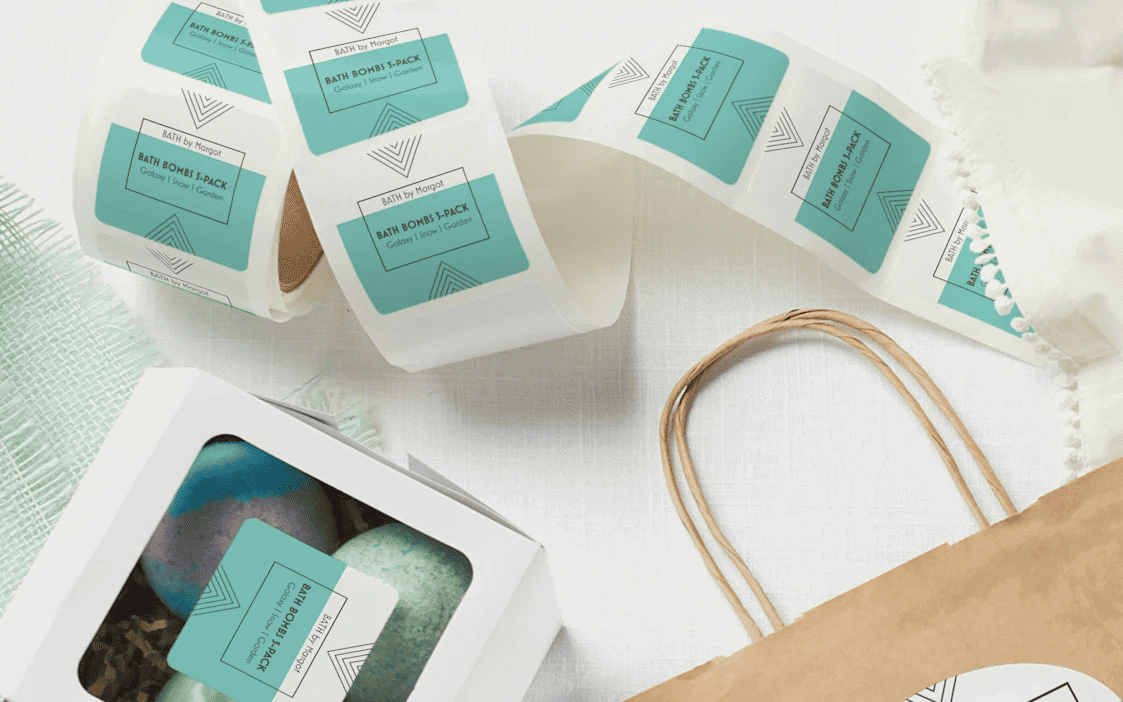
Direct thermal labels present a cost-effective labeling solution for food and beverage production companies. Direct thermal labels use chemically treated paper or synthetic fiber. Once the label is heated using a thermal printer, the desired image or text is printed on the treated substrate. Direct thermal labels are ideal in places with limited heat and moisture.
Advantages of direct thermal labels
- Cost-effective Imagine a company printing hundreds of thousands of labels using cartridges; that could be costly. Direct thermal labels use thermal printers, which do not use cartridges. Thermal printers also have no moving parts, but you only need to keep the print head clean. This means there are few maintenance costs involved in the thermal printing of labels. The process produces high volumes of labels with low costs involved.
- High print speed and quality Thermal printing are common in gas stations and supermarkets. When you go to the supermarket, you will likely get a thermal printed receipt within a short delivery time (milliseconds). Thermal printers are fast and can print hundreds of labels in a minute, which would take hours when using traditional methods. Direct thermal printing is reliable and effective, producing quality and easy-to-scan labels. This is because there is no likelihood of wrinkling from moving ribbons.
Here are the common applications of direct thermal labels in the food and beverage industry:
- Product nutritional labels
- Barcode labels for food products
- Shipping and receiving labels
- Pricing tags
- Shelf labels, and more.
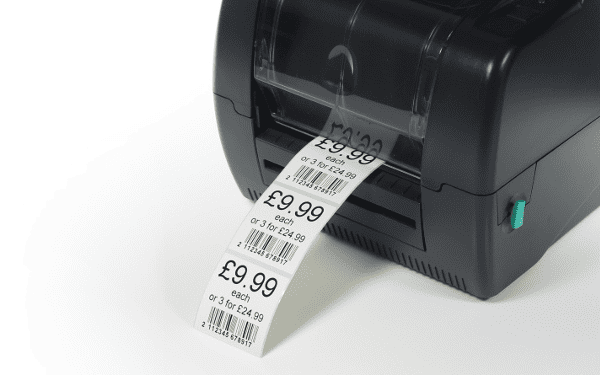
Material 5: Linerless Labels
Linerless labels are gaining popularity in food and beverage manufacturing companies as the call for more sustainable packaging solutions continue. Linerless labels have no adhesive liners and significantly reduce waste. This is one of the emerging technologies that improve efficiency in food production. The linerless labeling does not involve the physical handling of labels; a label applicator (or “labeler”) is used for applying the linerless labels, ensuring high efficiency in labeling goods.
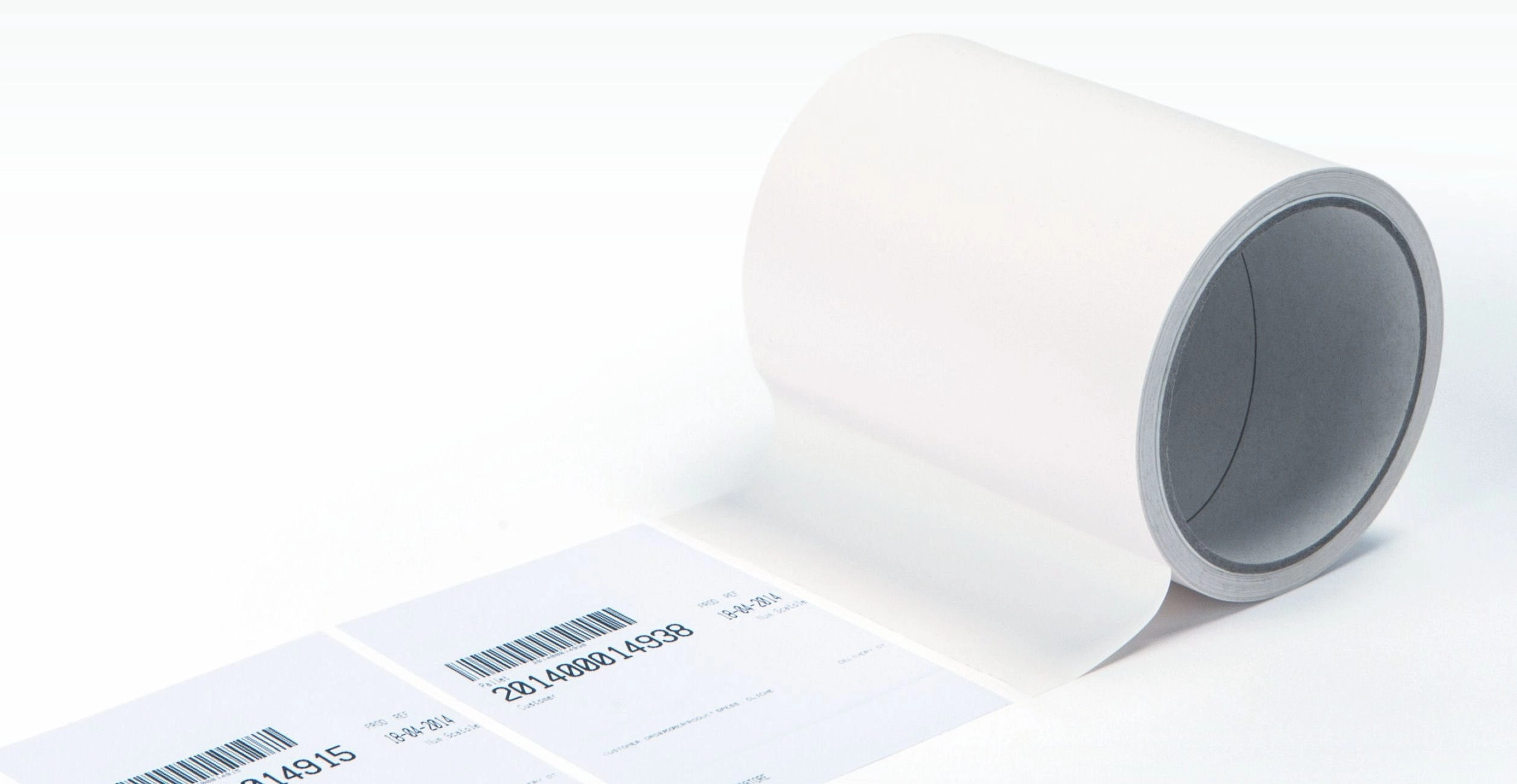
Advantages of linerless labels
- Waste reduction Since the linerless do not have an adhesive liner or paper backing for peeling off, this labeling greatly helps reduce commercial waste in the food industries. By reducing waste, the linerless labels also reduce the environmental carbon footprint.
- Flexibility in label size and shape Labels designed with backing is usually pre-cut into specific sizes, and users may find it challenging to fit the intended information on the label. With linerless labels, design flexibility is enhanced. Users tear off labels in desired shapes and sizes depending on their labeling needs.
Common applications in the food and beverage industry
- Linerless labels are commonly used in labeling packed foods like meat, fruits, poultry, vegetable pastries, fish and seafood, sausage, and ready-to-eat takeaway. The labels are applied in different formats: top, top & side, top & 2 sides, C-wrap, D-wrap, full wrap, landscape ready meal, slideable, and more.
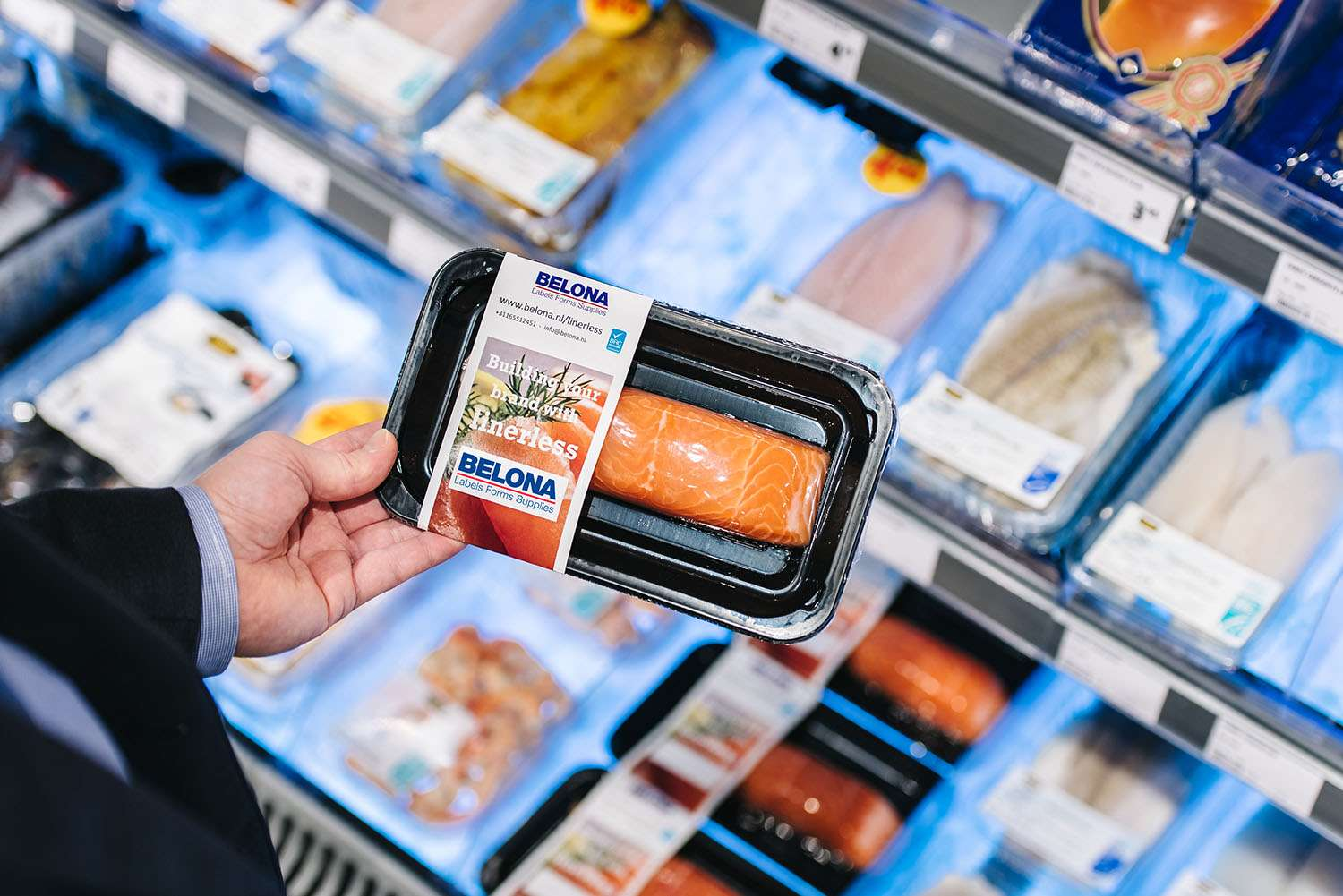
Conclusion
The need for efficient food processing cannot be overlooked. From food production to packaging and labeling, the process needs to be more efficient to meet the market demands. 3D printing has key benefits in food processing; reduced processing costs, efficiency, and quick turnaround times. Packaging and labeling are especially important, and the material used in each stage should be compatible with safety standards in handling food products. Food-grade inks, biodegradable packaging material, recyclable plastics, and various labeling technologies have proven to be useful printing materials in the food and beverages industry.
Print Your Packaging and Labels with Packoi
At Packoi, our packaging design and printing solutions have proven to help businesses stand out in the market. You can get custom packaging designs that meet your customer needs at affordable rates. Contact us and click the button below for more information.



